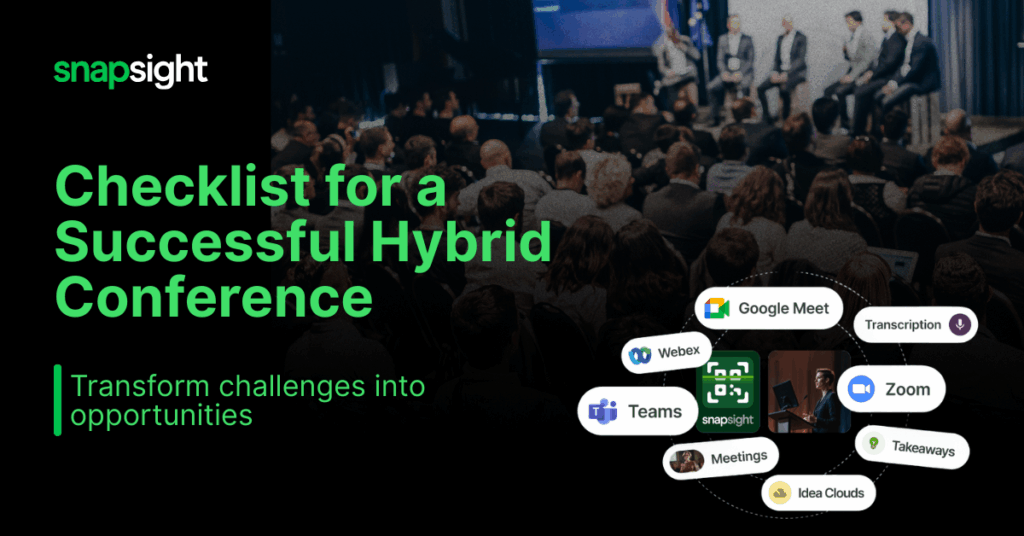Hybrid conferences deliver remarkable results—averaging 411 registrants compared to just 240 for in-person events. Yet 38% of event managers struggle with technical execution, while 40% of potential global attendees remain excluded due to language barriers. This comprehensive checklist transforms those challenges into opportunities.
Why Hybrid Conferences Demand a Different Playbook
Traditional conference planning fails when applied to hybrid formats. You’re not organizing one event—you’re orchestrating two parallel experiences that must feel equally valuable. Smart planners recognize that hybrid event translation services aren’t optional extras but foundational elements that determine whether your conference reaches hundreds or thousands.
Consider the economics: While hybrid conferences require 15-20% additional budget for technology and translation, they typically reduce overall costs by 50% through decreased venue requirements and eliminated travel for virtual speakers. Meanwhile, your potential audience doubles, ROI improves threefold, and content lifecycle extends indefinitely through recorded sessions.

Phase 1: Strategic Foundation (10-12 Weeks Before)
Define Your Hybrid Success Metrics
- Set separate KPIs for virtual and in-person audiences—engagement metrics differ significantly between formats
- Budget specifically for translation services (allocate 15-20% of total budget for language accessibility)
- Survey registrants to identify top three languages needed beyond English
- Establish minimum acceptable streaming quality standards (1080p video, 48kHz audio)
Choose Your Technology Stack
- Select a platform supporting 100+ concurrent streams with built-in multilingual conferencing tools
- Verify mobile app availability with offline capability for both audience types
- Confirm integration with your registration system for unified attendee management
- Test platform stability with your expected virtual attendance numbers plus 30% buffer
Phase 2: Building the Experience (6-8 Weeks Before)
Create Unified Engagement Opportunities
- Design every session to work simultaneously for both audiences—avoid “virtual as afterthought” syndrome
- Build dedicated networking sessions that connect virtual and in-person attendees through structured activities
- Schedule sessions considering multiple time zones for global participation
- Create digital swag bags accessible to all attendees regardless of location
Accessibility as Your Competitive Advantage
- Implement live captioning for events across all sessions—studies show 39% better content retention
- Prepare industry-specific vocabulary lists for technical accuracy in translations
- Ensure platform compatibility with screen readers and keyboard navigation
- Provide session materials in advance for attendees who need additional processing time
Phase 3: Technical Excellence (2-4 Weeks Before)
The Rehearsal Checklist
- Run complete simulation with minimum 50 virtual attendees to stress-test systems
- Test your AI-powered captioning platform with actual speaker accents and presentation styles
- Verify sub-5 second latency for translations to maintain conversation flow
- Confirm backup internet connection and streaming redundancy systems
- Brief all speakers on hybrid presentation techniques—looking at cameras, pacing for translation
- Create technical issue response protocols for common problems (audio drops, streaming freezes)
Phase 4: Event Day Execution
Your Command Center Setup
- Deploy separate support teams for virtual and in-person technical issues
- Monitor real-time translation accuracy through dedicated quality assurance staff
- Track engagement metrics hourly to identify and address participation drops
- Maintain standby interpreters for critical sessions requiring human translation backup
- Use AI in event management tools to automate routine tasks like session transitions
- Keep communication channels open between technical teams and moderators
Phase 5: Post-Event Amplification
Extend Your Conference Lifecycle
- Deploy AI-generated session summaries within 24 hours while attention remains high
- Create multilingual highlight reels for social media distribution
- Package recorded sessions with translations for on-demand access
- Analyze virtual versus in-person engagement data for future improvements
- Survey both audience types separately to understand unique pain points
Key Takeaways
- Budget smartly: Allocate 15-20% for translation and accessibility to unlock 2x attendance potential
- Test everything twice: Technical rehearsals prevent the 38% failure rate plaguing hybrid events
- Design for equality: Every session must deliver equal value to both virtual and in-person attendees
- Leverage AI tools: Modern captioning and translation technology reduces costs while improving accuracy
- Think beyond event day: Multilingual content packages extend your conference impact for months
Transform Your Hybrid Conference with Intelligent Language Solutions
Ready to break language barriers and triple your conference reach? TechSummit 2024 used this exact checklist combined with Snapsight’s comprehensive hybrid event translation services—including real-time captioning in 86 languages and AI-powered session summaries—to increase attendance from 400 to 1,200 participants across 47 countries.
Schedule a demo to see how Snapsight’s integrated platform simplifies multilingual hybrid conferences while maximizing global engagement.

